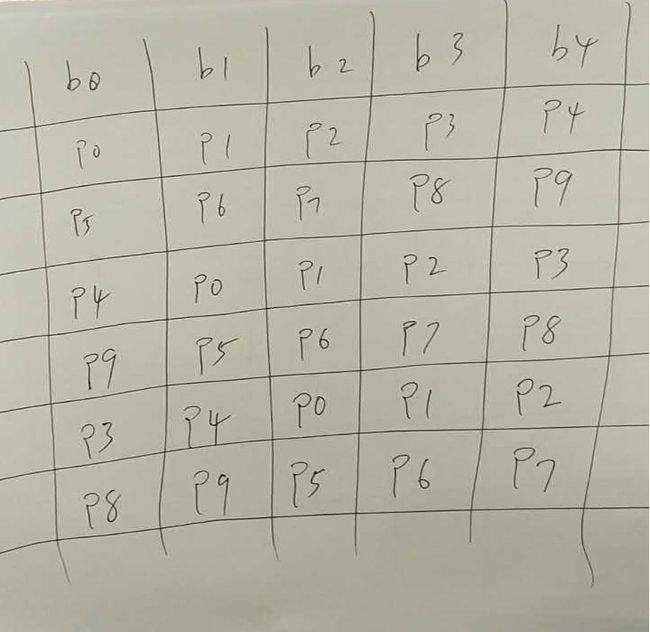- 从本章开始我们来介绍一个kafka集群逐步建立的过程;
- 集群中只有一台broker;
- topic的创建;
- 增加多台broker;
- 扩展已存在topic的partition;
第一个broker(我们叫它B1)启动
- broker启动流程,请参考Kafka初始化流程与请求处理;
- broker在启动过程中, 会先启动
KafkaController, 因为此时只有一台broker B1, 它将被选为当前kafka集群的Controller, 过程可参考KafkaController分析1-选主和Failover; - 当broker B1变为Controller后会作一系列的初始化, 具体参考 KafkaController分析7-启动流程, 包括以下几点:
a. 更新zk上的controller epoch信息;
b. 注册zk上的broker/topic节点变化事件通知;
c. 初始化ControllerContext, 主要是从zk上获取broker, topic, parition, isr, partition leader, replicas等信息;
d. 启动ReplicaStateMachine;
e. 启动PartitionStateMachine;
f. 发送所有的partition信息(leader, isr, replica, epoch等)到所有的 live brokers;
g. 如果允许自动leader rebalance的话, 则启动AutoRebalanceScheduler;
- Controller初始化完成后,
KafkaHealthcheck启动,在zk的/brokers下面注册自己的信息,类似下面这样:
{"jmx_port":-1,"timestamp":"1477624160337","endpoints":["PLAINTEXT://10.123.81.11:9092"],"host":"10.123.81.11","version":3,"port":9092} -
KafkaController中的ReplicaStateMachine已经启动且注册了BrokerChangeListener事件通知, 因为当KafkaHealthcheck启动结束后,BrokerChangeListener被触发:
def handleChildChange(parentPath : String, currentBrokerList : java.util.List[String]) {
inLock(controllerContext.controllerLock) {
if (hasStarted.get) {
ControllerStats.leaderElectionTimer.time {
try {
val curBrokerIds = currentBrokerList.map(_.toInt).toSet
val newBrokerIds = curBrokerIds -- controllerContext.liveOrShuttingDownBrokerIds
val newBrokerInfo = newBrokerIds.map(zkUtils.getBrokerInfo(_))
val newBrokers = newBrokerInfo.filter(_.isDefined).map(_.get)
val deadBrokerIds = controllerContext.liveOrShuttingDownBrokerIds -- curBrokerIds
controllerContext.liveBrokers = curBrokerIds.map(zkUtils.getBrokerInfo(_)).filter(_.isDefined).map(_.get)
newBrokers.foreach(controllerContext.controllerChannelManager.addBroker(_))
deadBrokerIds.foreach(controllerContext.controllerChannelManager.removeBroker(_))
if(newBrokerIds.size > 0)
controller.onBrokerStartup(newBrokerIds.toSeq)
if(deadBrokerIds.size > 0)
controller.onBrokerFailure(deadBrokerIds.toSeq)
} catch {
case e: Throwable => error("Error while handling broker changes", e)
}
}
}
}
}
}
干三件事:
- 更新
ControllerContext.liveBrokers; - 获取新增的broker列表, 回调
KafkaController.onBrokerStartup(newBrokerIds.toSeq); - 获取死掉的broker列表, 回调
KafkaController.onBrokerFailure(deadBrokerIds.toSeq);
-
KafkaController.onBrokerStartup: 针对新增的brokers作处理, 由于现在只有一个broker并且也没有任何的topic, 因此这里基本上是什么都不会作;
创建Topic
- 目前kafka支持两种方式创建topic:
- 如果kafka启动时允许自动创建topic(可以在配置文件中指定
auto.create.topics.enable=true), 则发送消息到kafka时,若topic不存在,会自动创建; - 使用admin工具(bin/kafka-topics.sh)先行创建, 我们这里讲解这种方式;
- 如果kafka启动时允许自动创建topic(可以在配置文件中指定
- 在使用
bin/kafka-topic.sh脚本来创建topic时, topic的config会被写入zk的/config/topics/[topic]下, topic的parition分配信息会被写入zk的/brokers/topics/[topic]下.
其中parition的分配信息用户可以指定,也可由kafka-topic.sh脚本自动产生,产生规则如下:
如查未指定开始位置,就随机选择一位置开始,通过轮询方式分配每个分区的第一个replica的位置, 然后每个partition剩余的replicas的位置紧跟着其第一个replica的位置.
假设一个集群有5个broker, 有个topic有10个parition, 每个parition有3个复本,则分配如下图:
-
KafkaController中的PartitionStateMachine组件在启动时注册了TopicChangeListener(监控听/brokers/topics), 此时被触发:
val currentChildren = {
import JavaConversions._
(children: Buffer[String]).toSet
}
val newTopics = currentChildren -- controllerContext.allTopics
val deletedTopics = controllerContext.allTopics -- currentChildren
controllerContext.allTopics = currentChildren
val addedPartitionReplicaAssignment = zkUtils.getReplicaAssignmentForTopics(newTopics.toSeq)
controllerContext.partitionReplicaAssignment = controllerContext.partitionReplicaAssignment.filter(p =>
!deletedTopics.contains(p._1.topic))
controllerContext.partitionReplicaAssignment.++=(addedPartitionReplicaAssignment)
if(newTopics.size > 0)
controller.onNewTopicCreation(newTopics, addedPartitionReplicaAssignment.keySet.toSet)
干三件事
- 更新
ControllerContext.allTopics; - 更新
ControllerContext.partitionReplicaAssignment; - 回调
KafkaController.onNewTopicCreation;
-
KafkaController.onNewTopicCreation: 处理新topic的创建
partitionStateMachine.registerPartitionChangeListener(topic)
onNewPartitionCreation(newPartitions)
onNewPartitionCreation的处理逻辑:
partitionStateMachine.handleStateChanges(newPartitions, NewPartition)
replicaStateMachine.handleStateChanges(controllerContext.replicasForPartition(newPartitions), NewReplica)
partitionStateMachine.handleStateChanges(newPartitions, OnlinePartition, offlinePartitionSelector)
replicaStateMachine.handleStateChanges(controllerContext.replicasForPartition(newPartitions), OnlineReplica)
- 针对每个新topic注册
PartitionChangeListener, 监控其partition数量的改变; -
partitionStateMachine.handleStateChanges(newPartitions, NewPartition): 将partition状态变为NewPartition; -
replicaStateMachine.handleStateChanges(controllerContext.replicasForPartition(newPartitions), NewReplica):将replica状态变为NewReplica, 由于目前partition并没有进行选主操作,因此无其他操作被触发; -
partitionStateMachine.handleStateChanges(newPartitions, OnlinePartition, offlinePartitionSelector):
4.1 将partition状态由NewPartition->OnlinePartition;
4.2 选取replicas列表的head作为leader, 将leader, isr信息写入zk的/brokers/topics/[topic]/partitions/[partition id]/state
4.3BrokerRequestBatch.addLeaderAndIsrRequestForBrokers: 构造 LeaderAndIsr Request,发送到各live broker, 这个request由broker内部的ReplicaManager组件处理,我们后面会有专门的章节来分析它;
4.4replicaStateMachine.handleStateChanges(controllerContext.replicasForPartition(newPartitions), OnlineReplica): 将replica状态由NewReplica->OnlineReplica;
第二个broker(我们叫它B2)启动
-
KafkaController组件依然启动, 选主时发现已有controller存在则不继续进行选主,但仍监听LeaderChangeListener事件; -
KafkaHealthcheck启动,在zk的/brokers下面注册自己的信息; - 第一个broker B1此时作为Controller,
BrokerChangeListener被触发, 获取新增的broker列表, 回调KafkaController.onBrokerStartup(newBrokerIds.toSeq);
-
sendUpdateMetadataRequest: 发送所有topic的partitionStateInfos到各broker; - 针对新启动的broker, 调用
replicaStateMachine.handleStateChanges更新replica状态到OnlineReplica:
val allReplicasOnNewBrokers = controllerContext.replicasOnBrokers(newBrokersSet)
replicaStateMachine.handleStateChanges(allReplicasOnNewBrokers, OnlineReplica)
-
partitionStateMachine.triggerOnlinePartitionStateChange():针对new and offline partitions进行选主;
针对已存在的topic, 在第二个broker B2上新增一个patition
- 通过
kafka-topics.sh脚本的alter命令, 在zk的/brokers/topics/[topic]下更新新增的partition的replicas信息; -
KafkaController中的PartitionStateMachine组件监听的AddPartitionsListener事件被触发:
val partitionReplicaAssignment = zkUtils.getReplicaAssignmentForTopics(List(topic))
val partitionsToBeAdded = partitionReplicaAssignment.filter(p =>
!controllerContext.partitionReplicaAssignment.contains(p._1))
if(controller.deleteTopicManager.isTopicQueuedUpForDeletion(topic))
error("Skipping adding partitions %s for topic %s since it is currently being deleted"
.format(partitionsToBeAdded.map(_._1.partition).mkString(","), topic))
else {
if (partitionsToBeAdded.size > 0) {
info("New partitions to be added %s".format(partitionsToBeAdded))
controllerContext.partitionReplicaAssignment.++=(partitionsToBeAdded)
controller.onNewPartitionCreation(partitionsToBeAdded.keySet.toSet)
}
}
干三件事
- 获取topic新增的partition的replicas信息;
- 更新
ControllerContext.partitionReplicaAssignment; - 回调
KafkaController.onNewPartitionCreation;
- 处理partition的新增:
def onNewPartitionCreation(newPartitions: Set[TopicAndPartition]) {
info("New partition creation callback for %s".format(newPartitions.mkString(",")))
partitionStateMachine.handleStateChanges(newPartitions, NewPartition)
replicaStateMachine.handleStateChanges(controllerContext.replicasForPartition(newPartitions), NewReplica)
partitionStateMachine.handleStateChanges(newPartitions, OnlinePartition, offlinePartitionSelector)
replicaStateMachine.handleStateChanges(controllerContext.replicasForPartition(newPartitions), OnlineReplica)
}
